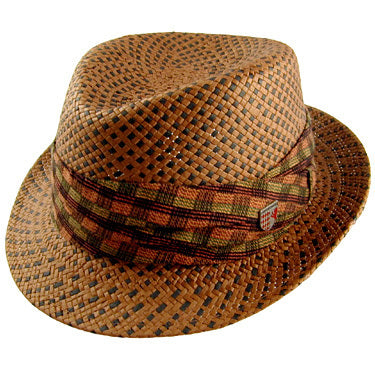Fashionable Hats
cover your pate
Weaved Fedora

“There are some indications that weaving was already known in the Palaeolithic. An indistinct textile impression has been found at Pavlov, Moravia. Neolithic textiles are well known from finds in pile dwellings in Switzerland. They are made of flax or tree bast, wool has only been attested since the Bronze Age. Plain weaves and tabbies predominate.
Enslaved women worked as weavers during the Sumerian Era. They would wash wool fibers in hot water and wood-ash soap and then dry them. Next, they would beat out the dirt and card the wool. The wool was then graded, bleached, and spun into a thread. The spinners would pull out fibers and twist them together. This was done by either rolling fibers between palms or using a hooked stick. The thread was then placed on a wooden or bone spindle and rotated on a clay whorl which operated like a flywheel.
The slaves would then work in three-woman teams on looms, where they stretched the threads, after which they passed threads over and under each other at perpendicular angles. The cloth was then taken to a fuller.”
—from wikipedia

